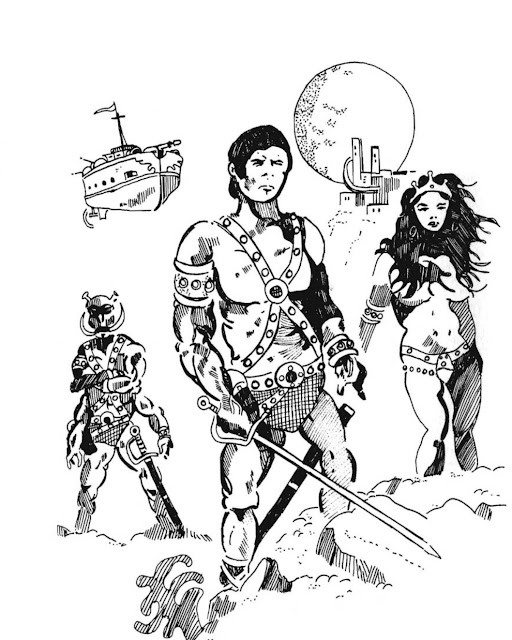The God Mitra from Supplement IV
Mitra comes from Robert E. Howard’s pantheon of deities for his Conan series. The god first appeared in Supplement IV Gods, Demi-Gods & Heroes by Kuntz & Ward, 1976. More recent copies of this book lack both Robert E. Howard’s pantheon and the Elric and Melnibone story line pantheon by Michael Moorcock. These two deleted sections have all sorts of cool ideas, monsters and of course gods. Mitra however occurs in at least one adventure produced by the Judges Guild, The Dark Tower by Paul Jaquays. In addition in The Dark Tower just like in Robert E. Howard’s Conan stories Set is the enemy of Mitra.
I would like to point out that one of the purposes of the D&D supplement was to let DMs see 40th level player characters were past the point of being player characters and a warning against too liberally awarding experience points and magic to the point that player characters became ridiculously powerful. The supplement thus was attempting to give DMs a framework or guide to understanding what a “god” might look like in D&D rules. Unfortunately I don’t think it worked as right now I can search the net and see 40th level player characters discussed today.
From the original D&D Supplement
MITRA
Armor Class — 4
Magic Ability: 40th Level
Move: 18"
Fighter Ability: 10th Level
Hit Points: 300
God of the Hyborians. this being has no known form, but his worshipers like to present him as a perfectly formed human male. Mitra is a 40th level magic/cleric type and uses the astral spell with no range limitation. He uses plus 3 armor and shield in battle and a plus 4 sword of cold.
My Notes…
Alignment: Good, Law
Aspects: Sun God, Defender, Righteous, Truth, Healing, and Authority
Symbol: Phoenix
Enemies: Set, and all evil beings.
Worshippers consider Mitra omnipotent, omnipresent and powers vast. Worship is monotheistic. Mitra is the most common god associated with human kingdoms of Hyboria. Mythology and theology includes heavenly reward, hell, and heavenly host (angels and saints). The religion is firmly against blood sacrifice. Idols of Mitra are representative ideal images but not to be worshipped… usually portrayed as a bearded man. Salvation is based on good deeds. Followers generally have a sense of justice, a strong sense of right and wrong with forgiveness part of the theology. He has sent prophets.
Clergy: Strict, celibacy, abstain from mind altering substances, educated keepers of ancient lore and wisdom, worship is through dedication and prayer. Mitra abhors human sacrifice. Temples are not ornate, reflecting a pious and ascetic atmosphere.
So that’s an idea of how Mitra appears as part of Conan’s World.
Now there has been Conan movies, comics and video games… thus we have this as the cross of Mitra… which by the way turns vampires








Comments
Post a Comment